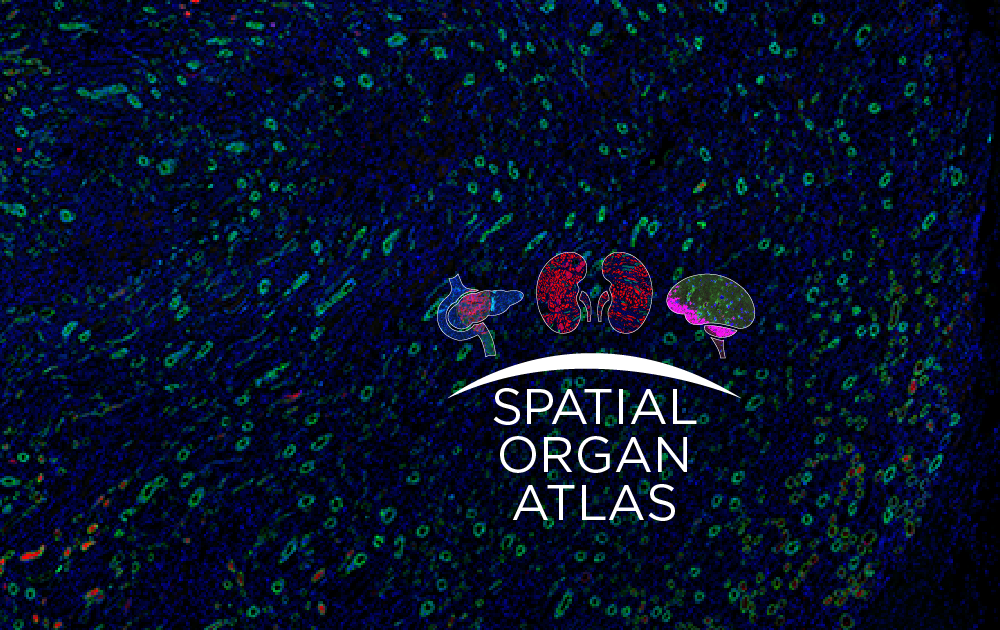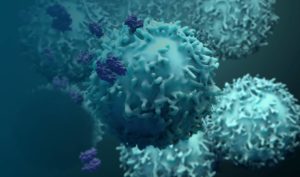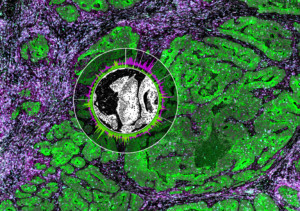
NanoString Blog
Category: GeoMx DSP

Digital Spatial Profiling GeoMx DSP Spatial Transcriptomics
A new map for our anatomy: the Spatial Organ Atlas
One year for spring break, we found ourselves in Portland, Oregon. For science-y people, a trip to Portland would be incomplete without a visit to the Oregon Museum of Science…

GeoMx DSP Infectious Disease
The GeoMx® Digital Spatial Profiler is Aiding Global Infectious Disease Researchers to Reveal How the Immune System Responds to HIV
Imagine a world without HIV The innate immune response is the first line of defense against the pathogen during a viral infection. Only later the adaptive immune response develops in…

GeoMx DSP Neuroscience Spatial Biology
What is Chronic Traumatic Encephalopathy?
Chronic traumatic encephalopathy (CTE) is a progressive neurodegenerative disease affecting people who have suffered repeated concussions and traumatic brain injuries (TBI). CTE was first described in 1928 by Dr. Harrison…

GeoMx DSP Spatial Biology Spatial Molecular Imaging Spatial Transcriptomics
Spatial Revolution: An Exciting Future for Cancer Biology Research
Many years ago, I was playing hide and seek with my cousins at my grandparent’s house. I was “it” and couldn’t seem to find one of my cousins anywhere. After…

GeoMx DSP Spatial Biology Spatial Transcriptomics
Spatial Transcriptomic Services: Azenta Life Sciences Paves the Way.
Azenta Life Sciences, formerly known as GENEWIZ, has been serving the academic and biopharma markets with its comprehensive next-generation sequencing services (NGS) since 1999. Their extensive website of Services makes…

Digital Spatial Profiling GeoMx DSP nCounter Oncology Spatial Transcriptomics
New approaches to CAR-T therapy
What is CAR-T cell therapy? In the fight against cancer, immunotherapies that enlist and strengthen the power of a patient’s immune system to attack tumor cells have revolutionized treatment paradigms.…

Data Analysis GeoMx DSP
The Inspiration Behind GeoScript™ Hub for Spatial Data Analysis
Meet two of NanoString’s finest, Debra Toburen, Senior Director of Software Product Management, and Prajan Divakar, Senior Product Enablement Scientist, who are focused on enabling customers to get the most…

GeoMx DSP Oncology
Breast Cancer: Best practices for using GeoMx® Digital Spatial Profiler
It’s October and breast cancer awareness month. Breast cancer kills more women than any other type of cancer. It isn’t just limited to women either – a man’s lifetime breast…

Digital Spatial Profiling GeoMx DSP Spatial Biology Spatial Transcriptomics
Spatial Transcriptomics: Birth of GeoMx® Digital Spatial Profiler
“A rose started off a bud, a bird started off an egg, and a forest started off a seed.” (Matshona Dhliwayo, author and philosopher). It may seem odd, but the…

Digital Spatial Profiling GeoMx DSP Spatial Biology
Why Spatial Biology Enhances Spatial Transcriptomics Data
Spatial Transcriptomics is used to determine subcellular localization of mRNA molecules. NanoString explains how this data enhances research.

Digital Spatial Profiling GeoMx DSP Spatial Biology Spatial Molecular Imaging Spatial Transcriptomics
Spatial Biology named Method of the Year by Nature Methods
Established in 2007, the Nature Methods’ “Method of Year” feature has covered the most revolutionary methodological developments in life science research. Starting in 2007, the Method of Year winner was,…

GeoMx DSP
5 Important Pubs that Explore the Tumor Microenvironment
Exploration is in our DNA. As Homo Sapiens developed in the habitable regions of Africa, search of new food sources, climate changes, and mere curiosity pushed us beyond our confines…